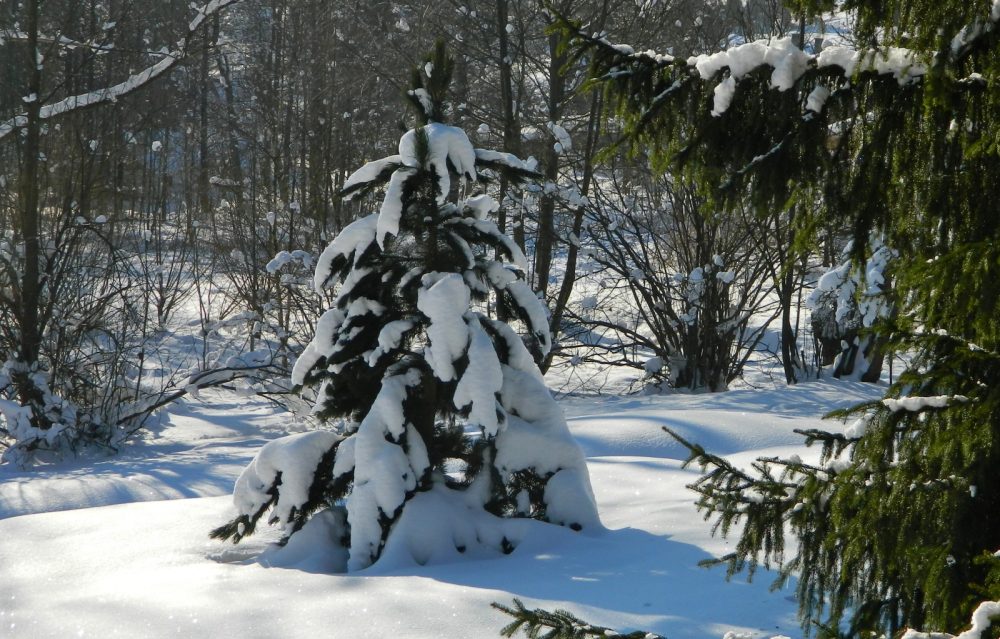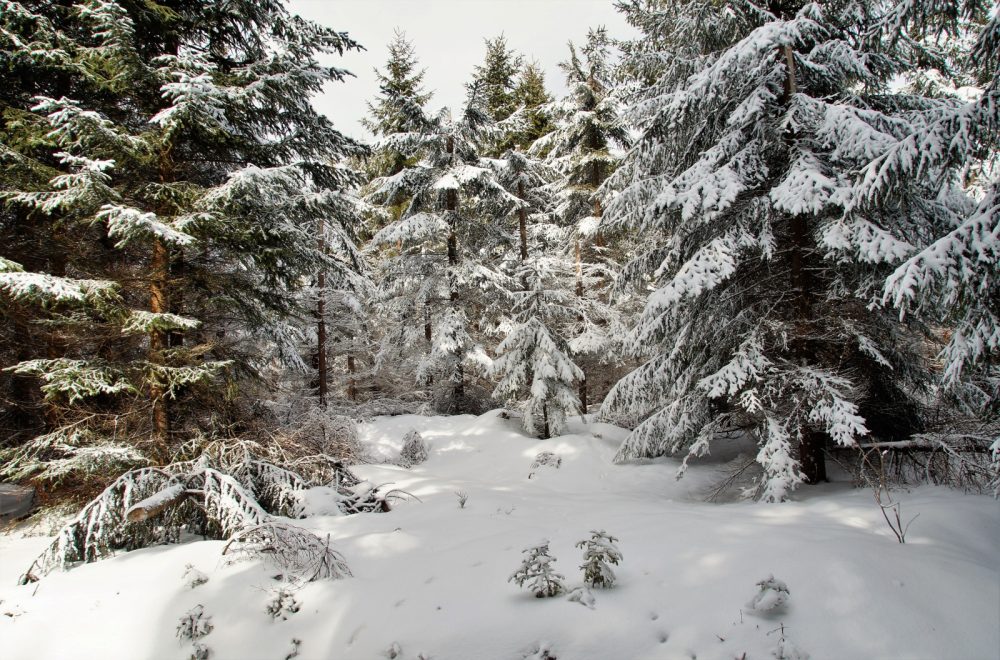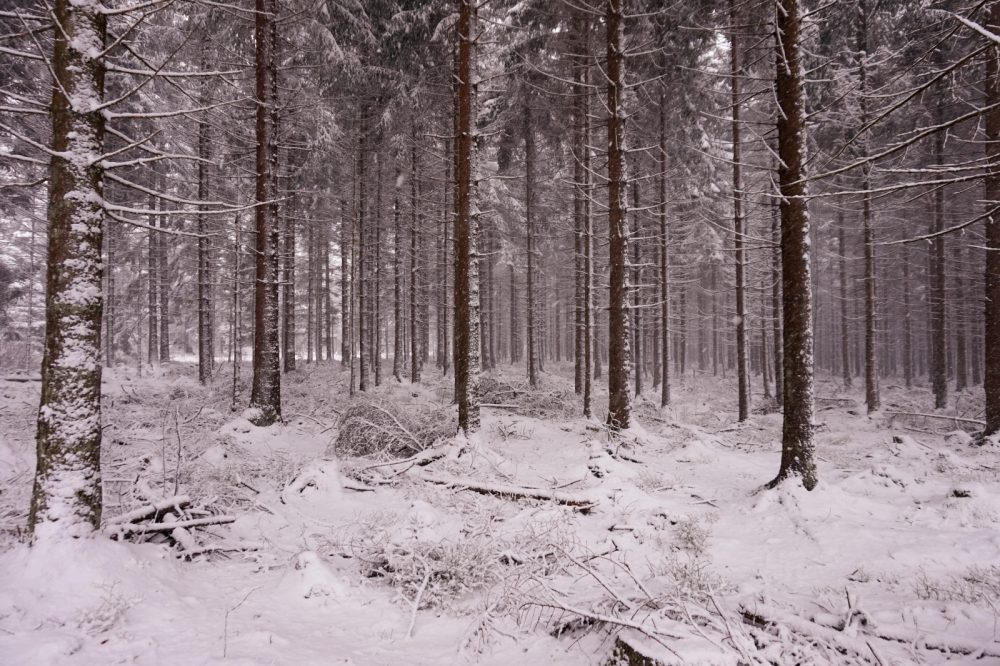Let’s use potential of young spruce stands, having been established in the past
 Norway spruce has recently been on the decline due to widespread disasters in spruce monocultures. Its further planting in lower positions up to 500 m above sea level is considered to be highly risky, also due to the ongoing climate change, which has and will have an impact on forest silviculture. However, there is still a significant proportion of non-mixed spruce young stands established in the past, which are worth taking care of and thus using their production potential.
Norway spruce has recently been on the decline due to widespread disasters in spruce monocultures. Its further planting in lower positions up to 500 m above sea level is considered to be highly risky, also due to the ongoing climate change, which has and will have an impact on forest silviculture. However, there is still a significant proportion of non-mixed spruce young stands established in the past, which are worth taking care of and thus using their production potential.
These young stands from artificial regeneration represent an unstable ecosystem that is unable to develop successfully without active forest silviculture measures, the aim of which should be to preserve a certain proportion of stable spruce individuals in the future species composition.
In a current time, the trend of forest silviculture with a more varied species composition is being applied in the Czech Republic, which is expected to be more resistant to climate change. The share of spruce in artificial regeneration felt from 43% in 2000 to 31% in 2020.
Norway spruce needs enough growth space to achieve individual stability, especially at a young age, when silviculture measures can most easily have a positive effect on the development of stem form and slow down the unwanted shortening of crowns. Absence of silviculture measures in young spruce stands results in the formation of unstable stands with slenderness individuals in the stand level and with their subsequent disruption due to the negative effects of snow and wind.
The culmination of DBH annual growth occurs in artificially established spruce stands already at the age of 10–15 years, the height increase culminates at the age of 20–30 years. After reaching an upper stand height of about 10 m, it is no longer possible to significantly improve the stability of individual trees using silviculture measures, and it is necessary to rely on the mutual coverage of individuals in a fully closed stand.
 Forest stands tending also plays a significant role in modifying the species composition of forest stands and its influence on changing the vegetation environment by modifying the radiation, thermal and water regime of the stands, together with its influence on the acceleration of the nutrient cycle due to changes in the amount of fallout and the rate of decomposition of organic soil horizons, is very significant.
Forest stands tending also plays a significant role in modifying the species composition of forest stands and its influence on changing the vegetation environment by modifying the radiation, thermal and water regime of the stands, together with its influence on the acceleration of the nutrient cycle due to changes in the amount of fallout and the rate of decomposition of organic soil horizons, is very significant.
The impact of spruce growth on mitigating the adverse effects of drought is positive. This is especially important for spruce stands growing at lower altitudes, where the adverse effect of drought is most pronounced.
Although experiments with tending of spruce forest stands have a long tradition in the Czech Republic, knowledge about its influence on the development of spruce stands is still insufficient. Forest scientists from the Opočno Research Station, VÚLHM, v. v. i., have been dealing with this issue for a long time. They published the latest results of their research in the paper Growth response of Norway spruce thicket to thinning at lower altitudes (Růstová reakce smrkových mlazin nižších poloh na výchovný zásah), which was published in the journal Reports of Forestry Research (zprávy lesnického výzkumu) 4/2022.
As for the aim of their research, it was to evaluate the growth response of Norway spruce to the silviculture (tending) measures in terms of diameter growth increasing, slenderness quotient and crown ratio after four vegetative seasons from the first tending intervention. The assumption was to achieve a slowdown in the increase in the slenderness quotient and the shortening of the crowns of the target trees due to the first tending intervention.
The researchers came to the following conclusions:
- Experimental tending measures led to a demonstrable acceleration of the thickness increase of the target spruce trees.
- Measures positively influenced (slowed down) the development of the slenderness quotient compared to the control.
- Measures also had a positive effect on slowing down the shortening of the crowns of the target trees.
 Following measures are recommended, on the base of experiment results and evaluation of findings from other literary sources, for Norway spruce silviculture in lower vegetation zones:
Following measures are recommended, on the base of experiment results and evaluation of findings from other literary sources, for Norway spruce silviculture in lower vegetation zones:
- Silvicultural measures in lower vegetation zones must be started in time for Norway spruce, preferably at trees height of about 5 m.
- Postponing of silvicultural measures to a growth stage exceeding the upper height of 7 m increases the risk of reduced growth stability, and after overcoming the upper height of 10 m, this risk is already very high.
- Due to the risk of silviculture of spruce at lower altitudes outside of its ecological optimum, it is recommended to prefer admixture of all tree species suitable for the site conditions during tending interventions.
- Spruce tending here should only lead to the preservation of its certain share in the future forest stand mixture.
- Application of trends of Norway spruce silviculture in a sparse coppice, it is also a possible way out for introducing other, mainly deciduous trees in case of individual mortality of the target spruces.
Paper was created during solution of project NAZV QK1810443: „Procedures for minimizing of damages caused by wind and snow to forest stands in the climate change consequences“ (Postupy pro minimalizaci škod způsobených větrem a sněhem na lesních porostech v návaznosti na klimatickou změnu).
Paper Growth response of Norway spruce thicket to thinning at lower altitudes (Růstová reakce smrkových mlazin nižších poloh na výchovný zásah) can be downloaded here.
Authors of paper: David Dušek, Renáta Smolíková, Dušan Kacálek, FGMRI (VÚLHM, v. v. i.), Research Station Opočno, e-mail: dusek@vulhmop.cz
Prepared by: Ing. Jan Řezáč, FGMRI (VÚLHM, v. v. i.), e-mail: rezac@vulhm.cz
Illustrative photo: Examples of spruce stands in winter
